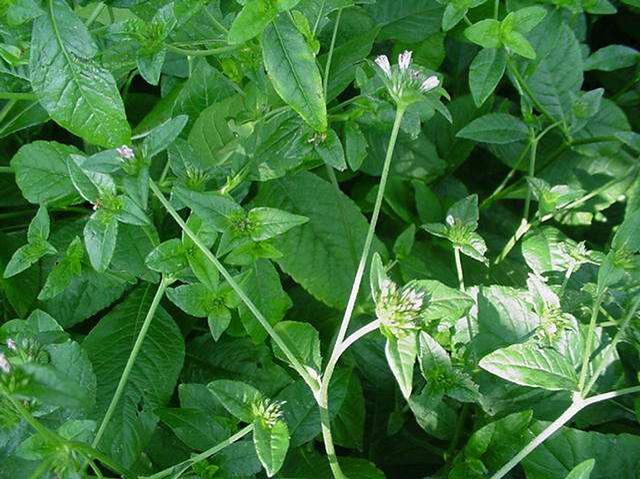Elephant’s foot (Elephantopus carolinianus)
elephant's foot
Elephantopus carolinianus, commonly called Elephant’s foot, is a herbaceous perennial native to the southern United States where it is found growing in low woods, along streambanks, roadsides, and in pastures. In Missouri this species is primarily found in counties south of the Missouri River. Valued for its late summer to fall bloom and large, attractive lower leaves. Bloom consists of many small flower heads which are arranged in compound inflorescences. Each individual flower head is subtended by (rests upon) leafy bracts and contains 2-5, tubular, pale lavender disc florets. When in full bloom, an entire inflorescence may be mistaken for a large, single bloom. Although a member of the composite family, the flowers of elephant’s foot are not daisy-like in appearance because each flower head contains only disc flowers. Similar in appearance and closely related to the ironweeds (genus Vernonia).
Specific epithet means from North or South Carolina.
The common name elephant’s foot refers to the large basal leaves of this species.

Easily grown in average, dry to medium, well-drained soil in part shade. Best on dryish, sandy soils. Tolerant of some full sun. Has the potential to become aggressive and weedy in garden settings.
| Hardiness zone | 4 - 9 |
| Sun light | Part shade |
| Water | Dry to medium |
| Maintenance | Low |
No serious insect or disease problems.
Suitable for use in native plant gardens, meadows and woodland gardens. Marginal ornamental attributes for perennial borders. Large lower leaves can form a nice ground cover if plants are massed. Has the potential to become aggressive and weedy in garden settings.
| Common name | elephant's foot |
| Botanical name | Elephantopus carolinianus |
| Plant type | Herbaceous perennial |
| Family | Asteraceae |
| Hardiness zone | 4 - 9 |
| Water | Dry to medium |
| Maintenance | Low |
| Flower color | White/lavender |
| Flowering period | August - September |
| Height | 2 - 3 ft. |
| Width | 2 - 3 ft. |